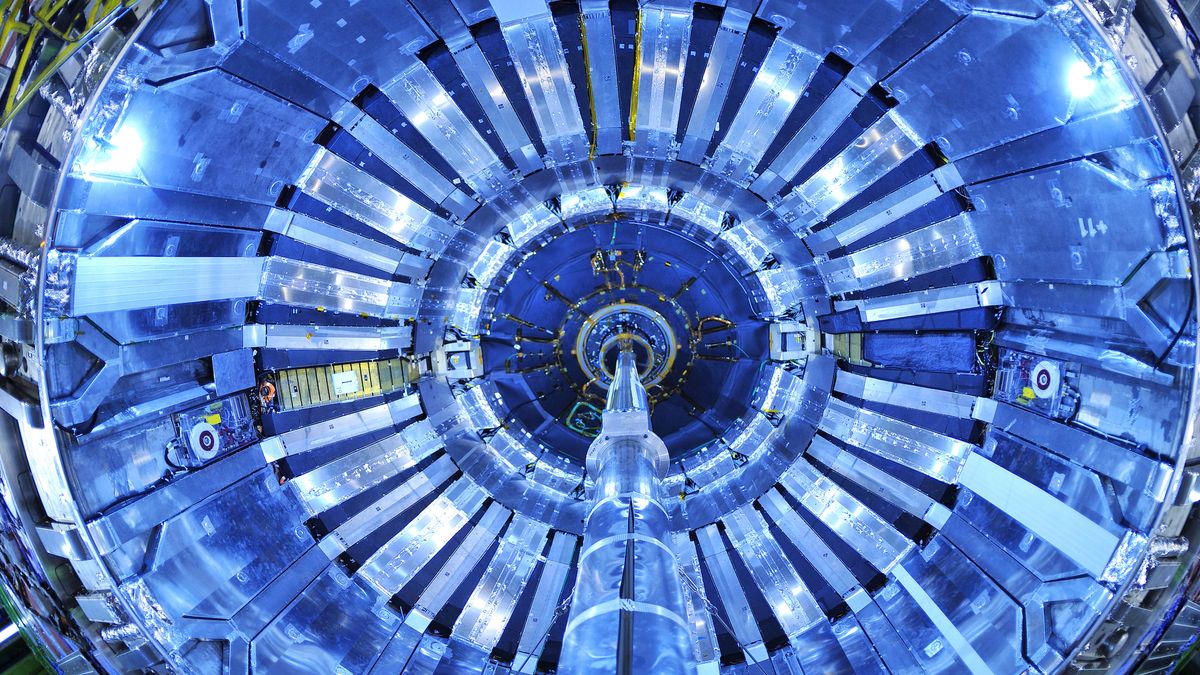'X particle' from the dawn of time detected inside the Large Hadron Collider
The mysterious particle will reveal insights into the earliest moments of the universe.

Physicists at the world's largest atom smasher have detected a mysterious, primordial particle from the dawn of time.
About 100 of the short-lived "X" particles — so named because of their unknown structures — were spotted for the first time amid trillions of other particles inside the Large Hadron Collider (LHC), the world's largest particle accelerator, located near Geneva at CERN (the European Organization for Nuclear Research).
These X particles, which likely existed in the tiniest fractions of a second after the Big Bang, were detected inside a roiling broth of elementary particles called a quark-gluon plasma, formed in the LHC by smashing together lead ions. By studying the primordial X particles in more detail, scientists hope to build the most accurate picture yet of the origins of the universe. They published their findings Jan. 19 in the journal Physical Review Letters.
Related: Beyond Higgs: 5 elusive particles that may lurk in the universe
"This is just the start of the story," lead author Yen-Jie Lee, a member of CERN's CMS collaboration and an experimental particle physicist at the Massachusetts Institute of Technology, said in a statement. "We've shown we can find a signal. In the next few years, we want to use the quark-gluon plasma to probe the X particle's internal structure, which could change our view of what kind of material the universe should produce."
Scientists trace the origins of X particles to one hundred billionth of a second after the Big Bang, back when the universe was a superheated trillion-degree plasma soup teeming with quarks and gluons — elementary particles that soon cooled and combined into the more stable protons and neutrons we know today.
Just before this rapid cooling, a tiny fraction of the gluons and the quarks collided, sticking together to form very short-lived X particles. The researchers don't know how elementary particles configure themselves to form the X particle's structure. But if the scientists can figure that out, they will have a much better understanding of the types of particles that were abundant during the universe's earliest moments.
Sign up for the Live Science daily newsletter now
Get the world’s most fascinating discoveries delivered straight to your inbox.
To recreate the conditions of a universe in its infancy, researchers at the LHC fired positively charged lead atoms at each other at high speed, smashing them to produce thousands more particles in a momentary burst of plasma resembling the chaotic primordial soup of the young universe. That was the easy part. The hard part was sifting through data from 13 billion head-on ion collisions to find the X particles.
"Theoretically speaking, there are so many quarks and gluons in the plasma that the production of X particles should be enhanced," Lee said. "But people thought it would be too difficult to search for them, because there are so many other particles produced in this quark soup."
But the researchers did have a handy clue to work with. Although particle physicists don't know the X particle's structure, they do know that it should have a very distinct decay pattern, because the "daughter" particles it makes should zip off across a very different spread of angles than those produced by other particles. This knowledge enabled the researchers to produce an algorithm that picked out the telltale signs of dozens of X particles.
"It's almost unthinkable that we can tease out these 100 particles from this huge dataset," co-author Jing Wang, a physicist at MIT, said in the statement. "Every night I would ask myself, is this really a signal or not? And in the end, the data said yes!"
Now that the researchers have identified the X particle's signature, they can determine its internal structure. Protons and neutrons are made up of three closely bound quarks, but the researchers think the X particle will look altogether different. At the very least, they know that the new particle contains four quarks, but they don’t know how they’re tied up. The new particle could comprise four quarks bound equally tightly together, making it an exotic particle called a tetraquark, or two quark pairs — called mesons — loosely bound to each other.
"Currently, our data is consistent with both [structures] because we don't have enough statistics yet," Lee said. "In the next few years, we'll take much more data so we can separate these two scenarios. That will broaden our view of the kinds of particles that were produced abundantly in the early universe."
Originally published on Live Science.

Ben Turner is a U.K. based staff writer at Live Science. He covers physics and astronomy, among other topics like tech and climate change. He graduated from University College London with a degree in particle physics before training as a journalist. When he's not writing, Ben enjoys reading literature, playing the guitar and embarrassing himself with chess.
Most Popular


